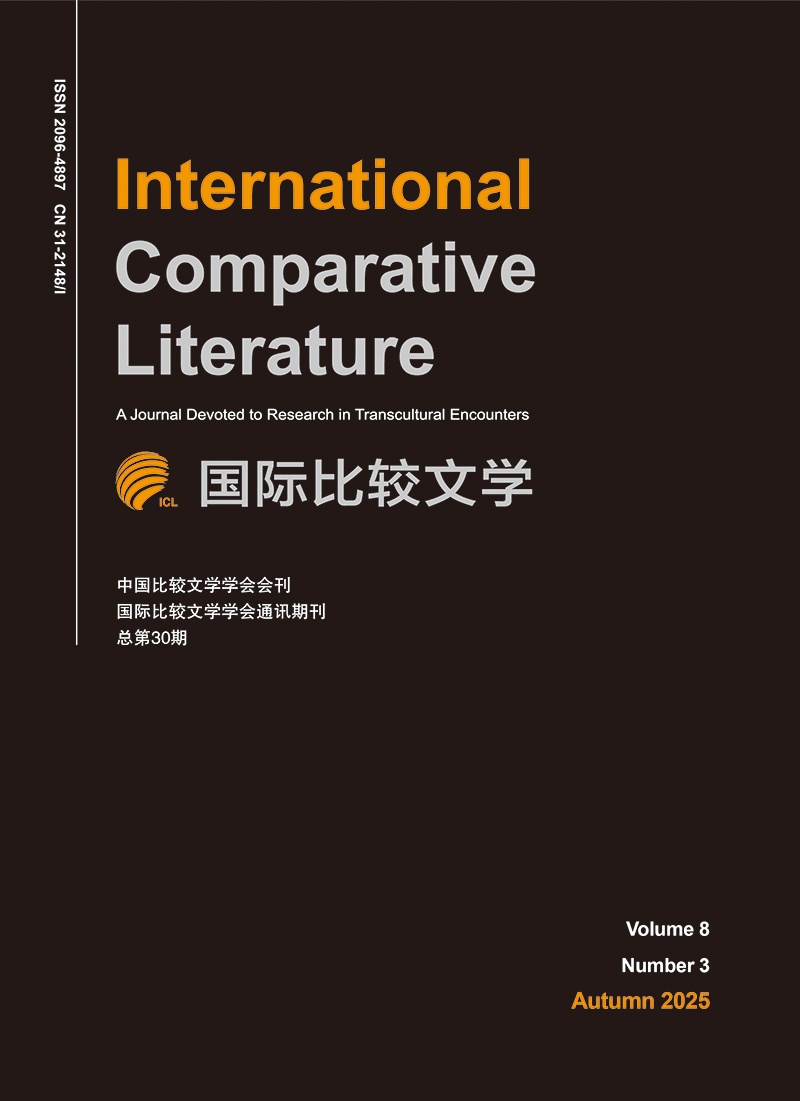|
[1]
|
Aristotle.“Poetics.” In Poetics,On the Sublime and On Style.Edited and translated by Stephen Halliwell,Cambridge,
|
|
[2]
|
Mass.:Harvard University Press,1995.
|
|
[3]
|
Alighieri,Dante.Tutte Le Opere.Roma:Newton Compton,1993.
|
|
[4]
|
Bakhtin,M.M.“From the Prehistory of Novelistic Discourse.” In The Dialogic Imagination:Four Essays.Translated by
|
|
[5]
|
Michael Holquist and Caryl Emerson.University of Texas Press Slavic Series.No.1.Austin:University of Texas Press,
|
|
[6]
|
1981,41-83.
|
|
[7]
|
——.Problems of Dostoevsky’s Poetics.Translated by Caryl Emerson.Theory and History of Literature.Vol.8.
|
|
[8]
|
Minneapolis:University of Minnesota Press,1984.
|
|
[9]
|
Calvino,Italo.Lezioni americane:sei proposte per il prossimo millennio.Opere di Italo Calvino.Milano:Mondadori,
|
|
[10]
|
2005.
|
|
[11]
|
Dentith,Simon.Parody.London;New York:Routledge,2000.
|
|
[12]
|
Eco,Umberto.Confessions of a Young Novelist.Richard Ellmann Lectures in Modern Literature.Cambridge,MA;London:
|
|
[13]
|
Harvard University Press,2011.
|
|
[14]
|
———.Diario Minimo.Milano:Mondadori,1963.
|
|
[15]
|
———.Misreadings.1st ed.San Diego:Harcourt Brace&Co,1993.
|
|
[16]
|
———.“Postille a‘ Il nome della rosa’.” In Il Nome della Rosa.Milano:Bompiani,1983.
|
|
[17]
|
———.Sei passeggiate nei boschi narrativi:Harvard University,Norton lectures 1992-1993.Saggi tascabili 59.Milano:
|
|
[18]
|
Bompiani,2003.
|
|
[19]
|
———.The Limits of Interpretation.Advances in Semiotics.Bloomington:Indiana University Press,1994.
|
|
[20]
|
Hutcheon,Linda.A Theory of Parody:The Teachings of Twentieth-Century Art Forms.New York,NY:Routledge,1991.
|
|
[21]
|
Kristeva,Julia.“Word,Dialogue,and Novel.” In Desire in Language:A Semiotic Approach to Literature and Art.Edited
|
|
[22]
|
by Leon S.Roudiez.Translated by Thomas Gora,Alice Jardine,and Leon S.Roudiez.European Perspectives.New
|
|
[23]
|
York,NY:Columbia University.Press,1980.
|
|
[24]
|
Nabokov,Vladimir.“On a Book Entitled Lolita.” In Lolita.New York:Vintage,1956,207-11.
|
|
[25]
|
———.Lolita.New York:Vintage,1989.
|
|
[26]
|
“pastìccio in Vocabolario-Treccani.” Accessed June 16,2018.http://www.treccani.it//vocabolario/pasticcio.
|
|
[27]
|
Quintillian.Institutio Oratoria of Four.Translated by H.E.Butler.Vol.III.Books VII-IX.Harvard/Heinemann:Loeb
|
|
[28]
|
Classical Library,1959.
|
|
[29]
|
Rorty,Richard.“Idealism and Textualism.” In Consequences of Pragmatism:Essays,1972-1980.Minneapolis:University
|
|
[30]
|
of Minnesota Press,2001.
|
|
[31]
|
Rose,Margaret A.Parody:Ancient,Modern,and Post-Modern.Cambridge;New York,NY,USA:Cambridge University
|
|
[32]
|
Press,1993.
|
|
[33]
|
——.“Reception Theorists.” In Parody:Ancient,Modern,and Post-Modern.Cambridge;New York,NY,USA:
|
|
[34]
|
Cambridge University Press,1993,170-77.
|
|
[35]
|
Sklovskij,Viktor Borisovic.“The Relationship between Devices of Plot Construction and General Devices of Style.” In
|
|
[36]
|
Theory of Prose.Translated by Benjamin Sher.Elmwood Park,Ill:Dalkey Archive Press,1991.
|
|
[37]
|
——.Theory of Prose.Translated by Benjamin Sher.Elmwood Park,Ill:Dalkey Archive Press,1991.
|
|
[38]
|
Valdés,Mario J.Hermeneutics of Poetic Sense:Critical Studies of Literature,Cinema,and Cultural History.Theory/
|
|
[39]
|
Culture.Toronto:University of Toronto Press,1998.
|

 点击查看大图
点击查看大图



 下载:
下载:

